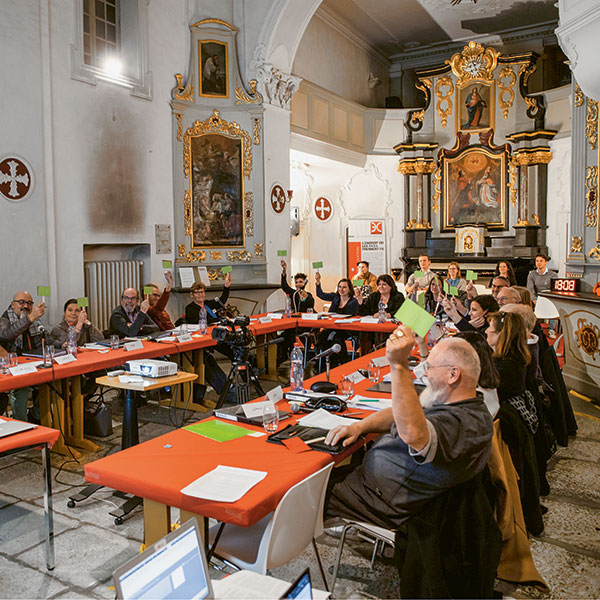Random selection for science funding: not such a crazy idea
A research funding lottery might make sense not just in the US – where success rates are extremely low – but perhaps also in Switzerland, says Matthias Egger.

Image: Manu Friederich
Some time ago, I received an angry e-mail from an unsuccessful funding applicant disappointedly telling me that “obtaining funding from the Swiss National Science Foundation (SNSF) is a lottery!” His previous project had been approved. But this one was “infinitely better”, he assured me. Sure, I grumbled to myself, why not simply draw lots for the lucky winners? It would certainly make our life at the SNSF much easier. I then forgot about it until I came across an article by Fang and Casadevall that made me think again.
Fang and Casadevall argue that funding rates in the US are now so low – at both the National Science Foundation and the National Institutes of Health (NIH) – that it’s no longer appropriate to allocate funds by ranking applications through a peer-review process. Panels consider many excellent proposals, only to be forced to choose just a few for funding. Low funding rates increase the risk of bias towards experienced, well-connected, male applicants. “The system is already in essence a lottery without the benefit of being random”, they write. Of course, they acknowledge how essential it is to submit funding applications to review by panels of scientists with the relevant expertise. The wheat must be separated from the chaff: applications that are unfeasible, badly conceived, or offering just more of the same must be rejected. To address this, Fang and Casadevall propose a simple two-stage system. Worthwhile applications are first selected through peer review, and then a random sample from among them is chosen for funding. This approach could alleviate the risk of biased decisions and reduce both workloads and costs.
One might argue that this idea would be irrelevant in Switzerland, because SNSF funding rates are much higher than those in the US (they are 10 percent or less at some institutes of the NIH). Nevertheless, I believe this approach may be relevant when applied to the cluster of borderline applications. The idea could be expanded by classifying into three groups: (i) excellent projects that clearly should be funded, (ii) poor ones that clearly should not, and (iii) good ones that would be funded if there was the budget. A number of applications from the last group could then be selected at random. Although I see advantages to this approach, I also see risks. For example, it might create the impression among politicians, researchers or the public at large that the SNSF is not willing or able to assess all the applications it receives.
I would be very interested to hear what you think. Please send an e-mail with the subject line “Funding by lottery” to matthias.egger@snf.ch, or send me a Tweet @eggersnsf.
Matthias Egger is President of the National Research Council of the SNSF and an epidemiologist at the University of Bern.




